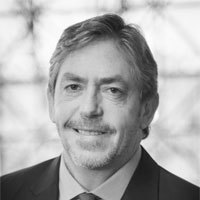Question
What are the design differences of OpenSound Navigator?
Answer
In addition to the extremely fast processing speed, there are a few other important design-specific things about OpenSound Navigator. There are clear technical differences between the way OpenSound Navigator was designed and works and the way traditional noise reduction and directionality works. Let's compare OpenSound Navigator to the two other options that are available in the marketplace.
OSN vs. Traditional Directionality and Noise Reduction
First, let's compare OpenSound Navigator with traditional directionality and noise reduction. The design of OpenSound Navigator is unique in that it has an analysis phase that occurs before anything else is happening in the product. In addition, the noise removal part of the system is spatially aware, meaning that we are given information about not only whether a signal is a speech or a non-speech signal, but also where that sound is coming from. That allows our noise reduction system to be much more specific about the sounds that it attacks. Furthermore, the criteria for changes in the noise reduction system are different. We use a different type of voice activity detector, which is different than the traditional modulation approaches that are used in more long-term based noise reduction systems in the marketplace. Finally, the big thing is the update speed. We can update 100 times per second, which is far beyond what you can do with traditional systems.
OSN vs. Beamforming
When we compare OSN to beamforming, again we have the analysis phase and the update speed. But the thing that really sets OSN apart from beamforming is this idea that we will protect clearly defined speech sources, even when they're to the sides, and, to some degree, when they're at the back. There is a directionality function in OpenSound Navigator. We don't just let every sound into the hearing aid. By being able to differentiate between speech sources and non-speech sources, we can target non-speech sources more aggressively than we attack speech sources. We tend to de-emphasize speech sources to some degree coming from the back to a lesser degree from the sides, but we leave the front half of the listening field wide open for any speech sources that happen to be there. We wanted to get to a point where we could improve the patient's performance in complex environments but without creating a narrow listening field or an unnatural listening experience.
This Ask the Expert is an excerpt from The Behavior of OpenSound Navigator in Complex Environments. Learn more on the Oticon Expo Page on AudiologyOnline.

